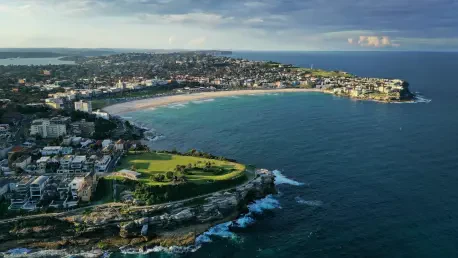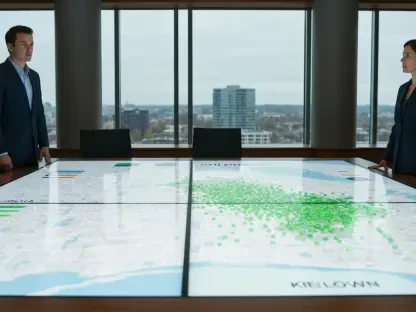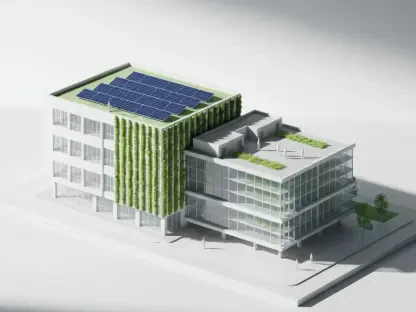The Australian housing market faces a continuing crisis, challenging governments and developers to rethink strategies for providing affordable homes. Queensland’s recent initiative focusing on build-to-rent (BtR) developments presents an innovative approach to this problem. In Brisbane, Mirvac’s inaugural BtR project, LIV Anura, emerges as a potential model amid exorbitant housing prices and rental demand spikes. As a product of collaboration with Mitsubishi Estate Asia and the Clean Energy Finance Corporation, the $1.8-billion development represents a pioneering effort to revitalize housing accessibility in Queensland, marking a turning point in addressing the broader housing shortage.
Collaboration and Innovation Redefine Housing
Government and Industry Partnership
The LIV Anura development exemplifies the profound impact of cooperative governmental and private efforts on urban planning, promoting a fresh wave of housing strategies. In an effort to combat the worsening housing crisis, Queensland’s state government has prioritized effective partnerships with key industry players. Mirvac, Mitsubishi, and Clean Energy Finance Corporation combined their expertise to actualize this vision, ensuring the $1.8-billion venture culminates in the creation of a promising residential option in Brisbane. Queensland Treasurer David Janetzki emphasized the importance of these partnerships, noting their pivotal role in bringing affordable housing to fruition. Amid escalating demand for rental properties, such collaborations can provide an expansive range of accommodation options, catering to diverse tenant needs. The state government’s proactive stance, considering the private sector’s initiatives, helps streamline housing solutions by strategically aligning public and corporate objectives.
Sustainability and Community Focus
Sustainability and community-building are central to the LIV Anura development, establishing benchmarks for future projects within the build-to-rent sphere. Featuring energy-efficient designs and robust renewable energy infrastructure, the project demonstrates not only an investment in housing but also a commitment to environmental responsibility. Common areas powered by clean energy, coupled with provisions for electric vehicle usage, ensure a reduced carbon footprint, aligning with the original goal to achieve a 5-Star Green Star Design rating. Mitsubishi Estate Asia’s Keisuke Utsuno highlighted the project’s dedication to creating vibrant communities, emphasizing integrated amenities such as a pool, sauna, gym, and retail spaces. These facilities cater to daily lifestyle needs, fostering an environment that enhances resident well-being and supports diverse social interactions.
Addressing the Demand for Rental Housing
Expanding National Reach
Mirvac’s endeavor to strengthen its BtR portfolio signifies a strategic alignment with Australia’s burgeoning rental market. With the completion of the LIV Anura project, Mirvac adds a crucial element to its expansive range of properties in Brisbane, Sydney, and Melbourne. Its consolidated presence across three states showcases a dynamic response to escalating demand for quality-filled living spaces. The forthcoming LIV Albert project anticipates further expansion, bringing Mirvac’s BtR apartment count to 2,100 nationwide. This development underscores the trajectory of rental trends, where more Australians seek flexible solutions better suited to modern, fast-paced lifestyles, entailing attractive possibilities for property owners and tenants alike.
Offering Security and Flexibility
The LIV concept endeavors to accommodate the evolving needs of renters, offering a flexible and secure housing model adaptable across varied life stages. As emphasized by Mirvac’s CEO Campbell Hanan, today’s market requires tailored solutions aimed at providing prospects beyond traditional homeownership. Rental solutions catering to different demographics facilitate accessibility and long-term usage without compromising security. Residents at LIV Anura benefit from tailored rental agreements and curated living experiences, resulting in a harmonious balance between affordability and accommodation. As Australia’s renting population progressively grows, such initiatives are indispensable in alleviating the housing crisis, ensuring a form of housing responds to mobility, affordability, and livability needs.
Future Directions in Build-to-Rent Housing
Aligning with Government Policies
The intersection of the BtR model and government policy underscores a broader strategic push toward sustainable housing solutions. As governments nationwide reassess the dynamics underpinning affordable housing, the BtR model offers a promising framework aligned with deliberate, policy-driven efforts. Notably, this approach emphasizes the private sector’s integral role in fulfilling housing quotas while maintaining economic viability. Attuned to existing regulations and exploring innovative collaborations, developers ensure long-term convenience and thriving urban communities. Influential projects like LIV Anura help chart this course, inviting continual support and policy adaptation to suit emerging trends.
Comprehensive Solutions for Housing Crisis
The Australian housing market is grappling with an ongoing crisis that compels governments and developers to devise new strategies for delivering affordable housing. A recent initiative in Queensland centered on build-to-rent (BtR) projects offers a creative solution to this pressing issue. Notably, in Brisbane, Mirvac has launched its first BtR venture, LIV Anura, which stands out as a potential blueprint amid sky-high property prices and surging rental demands. This ambitious $1.8-billion development is a collaborative endeavor involving Mitsubishi Estate Asia and the Clean Energy Finance Corporation. It represents a groundbreaking effort to improve housing accessibility across Queensland, marking a pivotal moment in tackling widespread housing scarcity. By integrating innovative strategies with significant investment and collaboration, Queensland’s approach exemplifies a forward-thinking response to the housing crisis, potentially serving as a model for other regions facing similar challenges.









